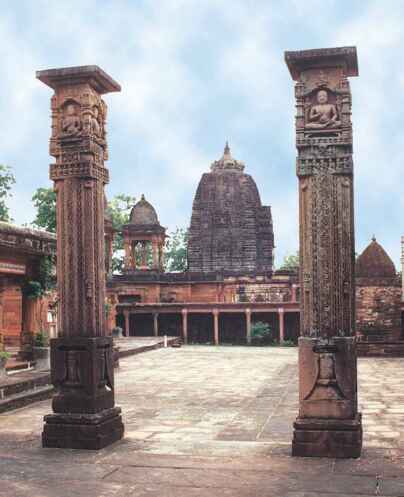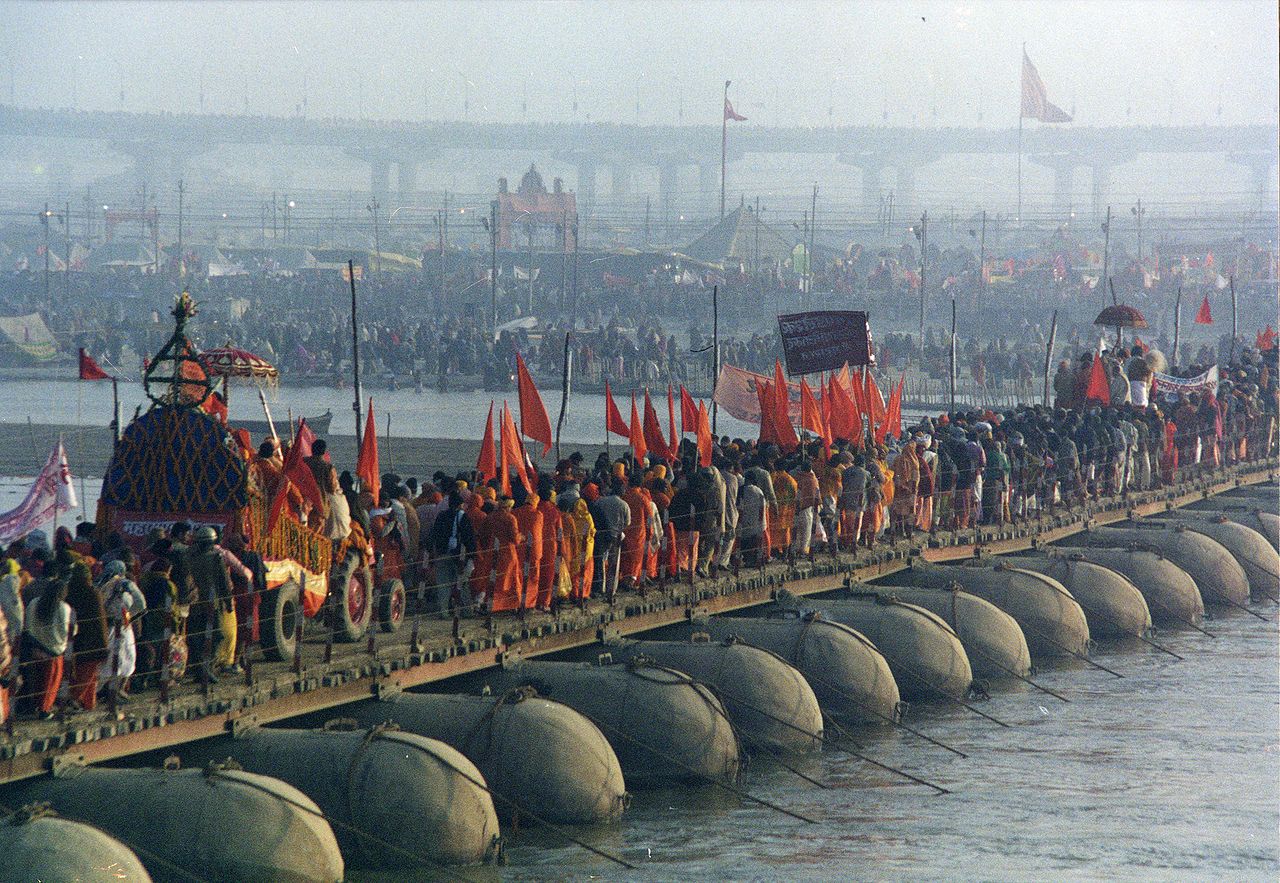Envis Centre, Ministry of Environment & Forest, Govt. of India
Printed Date: Friday, November 22, 2024
Uttar Pradesh Famous for
Uttar Pradesh is one of the most popular and an established tourist destination for both Indians and non-Indians alike in India. The most populous state of India, Uttar Pradesh contains a large number of historical monuments and places of religious significance. Geographically, Uttar Pradesh is very diverse, with Himalayan foothills in the extreme north and the Gangetic Plain in the centre. It is also home of India's most visited sites, the Taj Mahal, and Hinduism's holiest city, Varanasi. Kathak, one of the eight forms of Indian classical dances, originated from Uttar Pradesh. Uttar Pradesh is at the heart of India, hence it is also known as The Heartland of India. Cuisine of Uttar Pradesh like Awadhi cuisine, Mughlai cuisine, Kumauni cuisine are very famous not only in India but also many places abroad.
Uttar Pradesh is known for its rich culture and tradition. It is home to Ayodhya and Mathura birthplace of Lord Rama and Lord Krishna respectively. Uttar Pradesh attracts a large number of both national and international tourists. Taj Mahal, one of the New Seven Wonders of the World in Agra is also located in Uttar Pradesh.
There are different places one can visit in Uttar Pradesh. Agra, Jhansi, Lucknow and Meerut are historical cities famous for their monuments. Mathura, Vrindavan, Gokul, Varanasi, Ayodhya and Allahabad are holy cities for Hindus and Kushinar and Sarnathare important Buddhist places among the main four pilgrimage sites related to the life of Gautama Buddha. Noida is the most developed urban city of Uttar Pradesh.
To boost the tourism in the state from within the country and other parts of the world, the Government of Uttar Pradesh established a 'Uttar Pradesh Heritage Arc' covering the cities of Agra, Lucknow and Varanasi.
==============================================================
Varanasi: Varanasi attracts thousands of Hindu pilgrims every year.
Varanasi (also called Kashi and Benares) is widely considered to be the oldest city in the world, before Jerusalem. It is famous for its ghats (steps along the river) which are populated year round with people who want to take a dip in the holy Ganges River.

Kashi Vishwanath Temple in Varanasi is home to the Vishwanath Jyotirling temple, which is one of the most sacred of Hindu Temples.
Mathura-Vrindavan: Birthplace of Lord Krishana. Both Mathura & Vrindavan have temples devoted to Krishna. During Holi, a special brand of Holi called the Lath mar Holi is played here.
Janmaashtami, the birth of Lord Krishna, is celebrated in the region.
Ayodhya: Hindus believe the birthplace of Rama to be in Ayodhya at the place called Ram Janmabhoomi, the site of the demolished Babri Mosque.
Ayodhya is also the birthplace of five Tirthankars, including the first Tirthankar of Jainism, Shri Rishabh Dev. He is known as the father of Jain religion. The city is also important in the history and heritage of Buddhism in India, with several Buddhist temples, monuments and centers of learning having been established here during the age of the Mauryan Empire and the Gupta Dynasty. Ayodhya reached its glorious peak as known to history during the reign of the Guptas over India.
Swaminarayan led the Swaminarayan Sampraday sect of Hinduism and lived here during his childhood years. It was from Ayodhya that Swaminarayan started his seven-year journey across India as Neelkanth.
Tulsidas is said to have begun the writing of his famous Ramayana poem Shri Ramacharitamanas in Ayodhya in 1574 CE. Several Tamil Alwar mention the city of Ayodhya. Ayodhya is also said to be the birthplace of Bahubali, Brahmi, Sundari, King Dasaratha, Acharya Padaliptasurisvarji, King Harishchandra, Shri Rama, Achalbhrata, and the ninth Gandhara of Mahavir Swami.
The Atharva Veda called Ayodhya "a city built by gods and being as prosperous as paradise itself".
Soron Shukar Kshetra is salvation land of Lord Varah and birthland of Sant Tulsidas.
==============================================================
Buddhist religious sites:
Uttar Pradesh has many sites which are connected to Lord Buddha and hence, are sacred to Buddhist.
Sarnath: a place where he held his first public discourse. Also at Sarnath is the Ashoka Pillar with the Lion Capital, is important archaeological artifact with national significance.
Kushinagar: Where he attained Mahaparinirvana (Demise).
Kaushambi: Where Buddha delivered many sermons.
Sankassa: Where he descended after addressing his mother in Heaven.
Sravasti: His favorite monsoon resort.
==============================================================
Jain religious sites:
Uttar Pradesh has many sites which are connected to Jainism and hence, are sacred to Jains.
Hastinapur : This is a popular religious site since it is believed to be birthplace of 3 tirthankar Shantinatha, Kunthunath and Aranatha.
Deogarh: There are 31 Jain temples build inside fort belonging to 8th-9th century.

Sarnath: Sarnath is believed to be birthplace of Shreyansnath.
Bada Gaon
==========================================================
Places of interest:
Agra – Taj Mahal and several others historical monuments and gardens.

Allahabad or Prayag – Well known for its Kumbh Mela. The place where Indian national river Ganges and Yamuna and Saraswati rivers meet. A mass Hindu pilgrimage in which Hindus gather at the Ganges river. Akbar forts, one of the most popular religious center of ancient and modern India for Hinduism. Uttar Pradesh's administrative and education capital.

The tomb of Khusrau Mirza in Khusro Bagh, Allahabad
Kanpur – Uttar Pradesh's commercial and Industrial hub, several historical places from Mughal, British era.
Kanpur Sangrahalaya, a museum
Lucknow – The capital of Uttar Pradesh, Several historical places Mughal, British and ancient India.
Mathura -The birthplace of Lord Krishna of Hinduism and Neminath of Jainism.
Vrindavan
Ayodhya – The birthplace of Lord Vishnu's incarnation prabhu Shri Rama.
Jhansi – Historical place, Rani Lakshmibai's battlefield against British, Jhansi Fort
Sarnath-Gautama Buddha first taught the Dharma, the Buddha as one of the four places of pilgrimage which his devout followers should visit. The birthplace of Shreyansanath, the eleventh Jain Tirthankar of the Jainism.
Kushinagar – It is an important Buddhist pilgrimage site, where Gautama Buddha is believed to have attained Parinirvana after his death.
Fatehpur Sikri-Historical place for Mughal Empire's palaces and forts.
